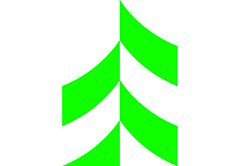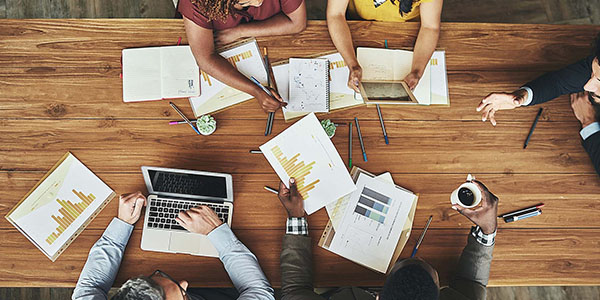Cyber security and Online Banking: 5 tips to protect your finances
By following a few basic tips, you can stay safe when online banking and stay on track toward your financial goals. In this article from our Resource Center, we cover five powerful tips you can implement today to ensure your funds stay secure
While October serves as the officially designated cybersecurity awareness month, every month is cybersecurity month when you’re banking online.
You should always take care to protect your sensitive information from hackers and other malicious actors.
Whether you’re viewing your account information or making a payment via credit card on your favorite online store, it’s critical you protect your information from those who want to steal it—along with your hard-earned money.
But how can you protect yourself online from those who want to do you harm?
In this article, we’ll outline five tips to help you protect your finances online. Note, however, that there’s no way to guarantee your absolute safety online.
Instead, your goal should be to make it as difficult as possible for hackers and anyone else to access your online accounts in the first place.
5 Online banking tips to protect your finances
Ensuring the ongoing safety of your money means following a few best practices when accessing your online accounts.
By making a habit of protecting your financial details, you can keep your online accounts safe from hackers and other malicious actors who want to steal your money or personal information.
1. Choose a strong and unique password
The first layer of protection between your finances and the outside world is the password for your bank account.
You should ensure all your financial accounts online have strong, unique passwords to protect your financial information from hackers.
As a few best practices relating to online passwords and account security:
- Never share your password with others — Your login credentials are as valuable as the money in your bank account. You should never share your password with anyone, for any reason. Further, you should note that your bank will never ask you for your account’s password. Never trust anyone calling “from the bank” or any other source that asks for your login information or password.
- Your password should be unique — One of the most common ways for hackers to gain access to online accounts is when users reuse passwords across multiple sites. If your social media account has the same password as your bank account, for example, then a vulnerability in the social media account’s security could lead to hackers gaining access to your banking details. Bottom line—you should never reuse your passwords across accounts.
- Password length always beats complexity — Because of how computers work, longer passwords are always more secure than shorter passwords. For example, an all-lowercase password with 15 characters—such as “thisisapassword”—would take roughly 1,000 years to crack using modern tools. Meanwhile, a computer could crack a shorter but more complex password such as “eXmpL123” in around seven minutes.
- Choose a password that’s hard to guess but easy to remember — For example, you could choose the first few words of your favorite song or some other easy-to-memorize password, then add a few numbers or special characters for additional security. However, make sure to avoid any words or names that are easily associated with you, such as the names of family members, pets, locations or other similar identifiers.
2. Take advantage of multi-factor authentication whenever possible
Multi-factor authentication—sometimes referred to as MFA—is the practice of using two or more authentication factors to confirm a user’s identity before allowing access to an account.
There are three common authentication factors that are used across all modern security applications, from nuclear codes to online bank accounts:
Something you know — This factor relies on information you know and can use to prove your identity, such as a password, personal identification number (PIN) or another similar identifier.
Something you have — This factor relies on the presence of a physical object that only the account holder can use, such as a phone (for text message verification), key (for a safety deposit box), email address, checkbook, debit card or any other “thing” that’s unique to you.
Something you are — This factor relies on biometric data to confirm your identity, such as fingerprints or even a physical teller recognizing you from your regular visits to a branch location.
In the past, websites would only require one form of identification in the form of something you know—such as a password or other form of login information.
However, financial institutions and other sites with a greater need for security are now moving to two-factor systems, where you’ll have to prove at least two of these authentication factors to access your account.
This will mean inputting a password or other form of login information and then confirming the login attempt through either a text message, an app or some other feature on your phone.
By using a two-factor approach, you can greatly decrease the chances that a malicious attempt can be made to access your account since they would need to bypass an additional form of authentication, not just one.
3. Never use public computers or public Wi-Fi networks to access your accounts
It’s safe to assume that any data you transfer over a network (such as a public Wi-Fi network) is visible to anyone else present on that network.
You should never use a public computer or network to access any sensitive information, such as banking details.
Using a public computer runs the risk of having your keystrokes recorded by a program that can steal your login details if you try to access your bank account, among other common security risks.
If you need to do anything that requires logging in—whether that’s reading your email or accessing your bank account—you should always wait until you can connect to a private network (such as your home) or have access to a private computer.
4. Regularly review your accounts to ensure you recognize all charges
Depending on how often you access your accounts online, it’s possible for a fraudulent charge to slip through the cracks without you noticing until weeks or months after the fact.
While most banks use advanced security methods to identify and prevent fraudulent transactions, you shouldn’t rely exclusively on your bank’s systems to prevent fraud on your accounts.
This means you should regularly check your various accounts to ensure you recognize all the charges that hit your accounts every month.
By regularly reviewing your accounts, you can quickly spot any out-of-place charges and contact your bank in a timely manner to resolve any issues.
5. Practice safe web habits to prevent malware and viruses
The best way to protect yourself from a hacker is to never give them a chance to steal your information in the first place.
As discussed in the password tip above, it would take a modern computer hundreds of years to guess an appropriately long password of 14 or more characters.
Because of this, hackers will often try to access your account using other methods, such as malware, keylogging programs or phishing:
- Malware — Malware is any form of computer program that interferes with your digital security or privacy. Typically, your computer will become infected with viruses and malware when you access unsecure websites or download compromised files from the internet.
- Keylogging Programs — A keylogger is a specific form of malware that tracks which buttons you press, allowing the program to steal your passwords and send them to a nefarious third party.
- Phishing Attempts — Phishing is a form of social engineering where a hacker tricks a user into revealing sensitive information or downloading malware. Often, phishing attempts take the form of unsolicited emails or phone calls from hackers posing as a representative of your bank or another similar business.
To prevent these types of attacks, you should always follow internet safety best practices to reduce the risk of infection and compromising your data.
Never download files or click buttons on sites you don’t trust. Avoid emails containing suspicious attachments or scare tactics. Always ensure your computer’s antivirus and anti-malware solution is enabled and working as intended.
Most importantly, if you’re confused about something or believe that your computer may be infected, don’t try to access your bank details or make any payments online until you can resolve the issue.
The easiest and fastest way for a hacker to gain access to your account is to trick you into giving up your password on a compromised computer or webpage.
Take action and learn how to effectively manage your accounts online
Protecting your bank accounts from hackers and other malicious actors online doesn’t have to be difficult.
In fact, by following a few cybersecurity best practices, you can keep your accounts safe from most forms of hacks.
To start, you should always secure your account with a unique password and multi-factor authentication.
Once your login credentials are secure, you should take proactive steps to protect yourself from common sources of malware. This means following internet best practices such as avoiding untrustworthy sites and never clicking links in suspicious emails.
Keep in mind that cybersecurity and digital best practices change regularly, so you should always try to stay on top of recent trends to ensure your continued protection.
If you have any questions about how you can better protect your accounts from malicious actors, give us a call at 800-236-8866, schedule an appointment online or visit us at any of our Associated Bank locations. You can also check out our online Security Center.
Our experienced team would be happy to talk about the ways you can protect your account and gain peace of mind in knowing your finances are secure.





